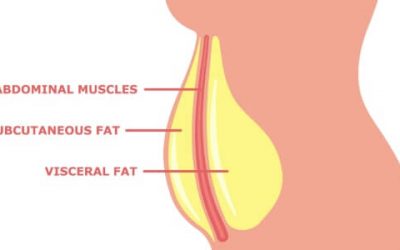
“Swimsuit season” may mean a little something different in the Dublin area, but that doesn’t mean you can’t work on your six pack.
Despite popular belief, your “core” and your abs aren’t quite the same thing. It’s more complex than that, but understanding how to target this elusive group of muscles comes with several benefits beyond looking good in a swimsuit.
First off, where is my core?
When fitness gurus talk about one’s “core,” they’re referring to several interconnected muscles located between your abdomen and ribs. If you want an oversimplified definition, it’s nearly everything on your torso other than your pectoral (chest) muscles.
Now you see why this means more than just your six pack.
Beyond the abdominal muscles, your core includes your diaphragm, pelvic muscles and many others to create a complex and crucial system that the whole body relies on for balance and stability.
Every single movement or action your body performs either originates from your core or at least runs through it.
All this means that your core doesn’t just affect your workouts, but it also significantly impacts how much pain and fatigue you feel performing ordinary movements. And from professional athletes to 9-5 desk jockeys, pain-free movement is something that everyone wants.
The importance of a strong core
Your core helps you do everyday tasks, ranging from tying your shoes to walking in the park, onto more physical activities like playing sports or gardening. Because it supports your spine and stabilises your whole body, core strength also reduces the strain on your bones and joints, which leads to overall health improvements like reduced muscle soreness and improved posture.
And yes, having good core strength does mean you’ll look a whole lot better next time you’re vacationing somewhere sunny.
So now that we know what the core is and why it’s important, let’s see how yours is doing.
Measuring core strength
The simplest way to measure your current core strength is with a basic yoga movement called the Boat Posture.

To test your core with the Boat Posture:
- Sit down on a yoga mat with your legs in front of you.
- Bend your knees and lift up your feet so you’re balancing on your butt.
- Once settled in that pose, straighten your legs as much as you can while keeping your back straight.
- Then reach out your arms (making sure they are also straight) to try to touch your toes.
- From the side, you should form a V-shape with your body, with your weight focused on your butt and your balance focused in your core.
People with good core strength should be able to hold this pose for at least 30 seconds, while those in especially good shape can hold it for minutes at a time.
If you struggle to reach a 30-second count, your core strength could use some improvement. But fear not, core workouts are easy to work into your exercise routine and usually don’t require any special equipment.
How to exercise your core — the right way
More than almost any workout movement, working your core requires precise movements. Otherwise, you’ll miss out on several of the movements.
A lot of people isolate small muscle groups by focusing on exercises like crunches and sit ups. Although these work the top layer of your abdominal muscles, they don’t incorporate core muscles in your back or sides to ensure the entire system gets attention.
Instead, you should focus on exercises that “chain” the whole system together.
The best examples of these are deadlifts, squats, push ups, planks and pilates. These are much better because of the way they strengthen the whole core area and ensure that your workouts are more effective than a typical six-pack routine.
Need a little assistance getting your core muscles on track?
Sign up for a one-on-one personal training course at Bodyscene right now to get a personalised workout regime designed to maximise your goals in the most efficient way possible. A healthy, strong core is just a click away.



